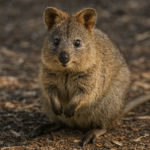
Coral snakes are a large group of elapid snakes that can be divided into two distinct groups, Old World coral snakes and New World coral snakes. There are 16 species of Old World coral snakes in three genera and more than 65 recognized species of New World coral snakes in two genera. The coral snake is a close relative of cobras, mambas and sea snakes. There are 65 species of coral snakes found around the world, some of them live in the water, but most of them are terrestrial (living on land) and prefers habitats such as salt marshes, swamps, bush areas and forests. The best known are the eastern and western coral snakes that inhabit North America. The coral snakes in eastern North Carolina are critically endangered.
Micrurus has the most species of the New World coral snake genera, with 80.
Coral snakes are not very large. Rare specimens may reach 3 feet in length, but most of them are 18 to 20 inches long.
The Arizona coral snake (Micruroides euryxanthus) is a small (40–50-cm) inhabitant of the American Southwest.
Coral snakes are characterized by specific body coloration which consists of black, red and yellow bands.
In most classifications, Old World coral snakes comprise the genera Calliophis (with 15 species) and Sinomicrurus (with six species) of southern Asia and the genus Hemibungarus (with three species) of the Philippines.
Some species may have pink or blue bands, while some others lack the bands completely. Head of the coral snake is black and it is hardly distinguished from the tail.
Some classifications also include African harlequin snakes (Homoroselaps), which are known for their pronounced orange, black, and yellow coloration.
Due to similarity between head and tail, snake curls when threatened and exposes its tail to confuse the predator.
There are 50 genera of coral snake mimics, such as the false coral snakes (see king snake and scarlet snake), and nearly one-third of all American species have some coral snake pattern.
Venom produced by the coral snake is the second strongest of all snake venoms. Luckily, back in 1967 anti-venom was produced. Death after the coral snake bite has not been recorded ever since.
Most coral snakes prey on other snakes, particularly worm snakes and blind snakes, with lizards being a secondary food source.
Coral snake produces neurotoxic venom which targets brain and nervous system. Sometimes effects of venom can become visible after 12 hours. If not treated with anti-venom, person will experience difficulties with movement and speech, and eventually die as a result of cardiac arrest due to inability to breath.
New World coral snakes lay 1 to 13 eggs.
Unlike other venomous snakes, coral snake cannot retract its venomous fangs into the mouth; instead, they are constantly erect.
The longevity record for Micrurus in captivity is 18 years.
Coral snake does not have strong or large fangs, so it needs to chew its prey in order to deliver toxin. Leather boots, for example, cannot be penetrated with coral snake’s fangs.
Coral snakes are extremely reclusive and generally bite humans only when handled or stepped on.
Since there are few non-venomous species of snakes that look like coral snake (because of their bands and colors), there are few rhyme which help people to distinguish venomous from non-venomous snakes. The most famous one is: “Red on yellow, kill a fellow” and ” red on black, friend of Jack”.
Coral snakes must literally chew on their victim to inject their venom fully, so most bites to humans don’t result in death. In fact, no deaths from coral snake bites have been reported in the U.S. since an antivenin was released in 1967.
People rarely come in contact with coral snakes because they are active mostly during the night or early in the morning hours. Besides, coral snakes are not aggressive and they will rather hide than confront with the predator.
Eastern coral snakes live in the wooded, sandy, and marshy areas of the southeastern United States, and spend most of their lives burrowed underground or in leaf piles.
Coral snakes spend most time during the day in the underground holes and tunnels which are dug by other animals. They can be also found under the rotten leaves or in the tree stumps.
They eat lizards, frogs, and smaller snakes, including other coral snakes.
Coral snakes are carnivores (meat eaters). They prefer frogs, mice, insects, lizards and small birds. They will also eat other snakes, including coral snakes. That is why they are called “ophiophagous”, which means “snake eaters”.
Baby snakes emerge from their eggs 7 inches long and fully venomous.
Coral snake is the only venomous snake in the North America which lays eggs (other species give birth to live snakes).
Adults reach about 2 feet in length.
Female lays 3 to 5 eggs in the summer. It takes couple of months (2 to 3) for eggs to hatch.
Average lifespan in the wild is unknown, but they can live up to seven years in captivity.
Babies have the same coloration as their parents and they are fully venomous from the first day of their life.









